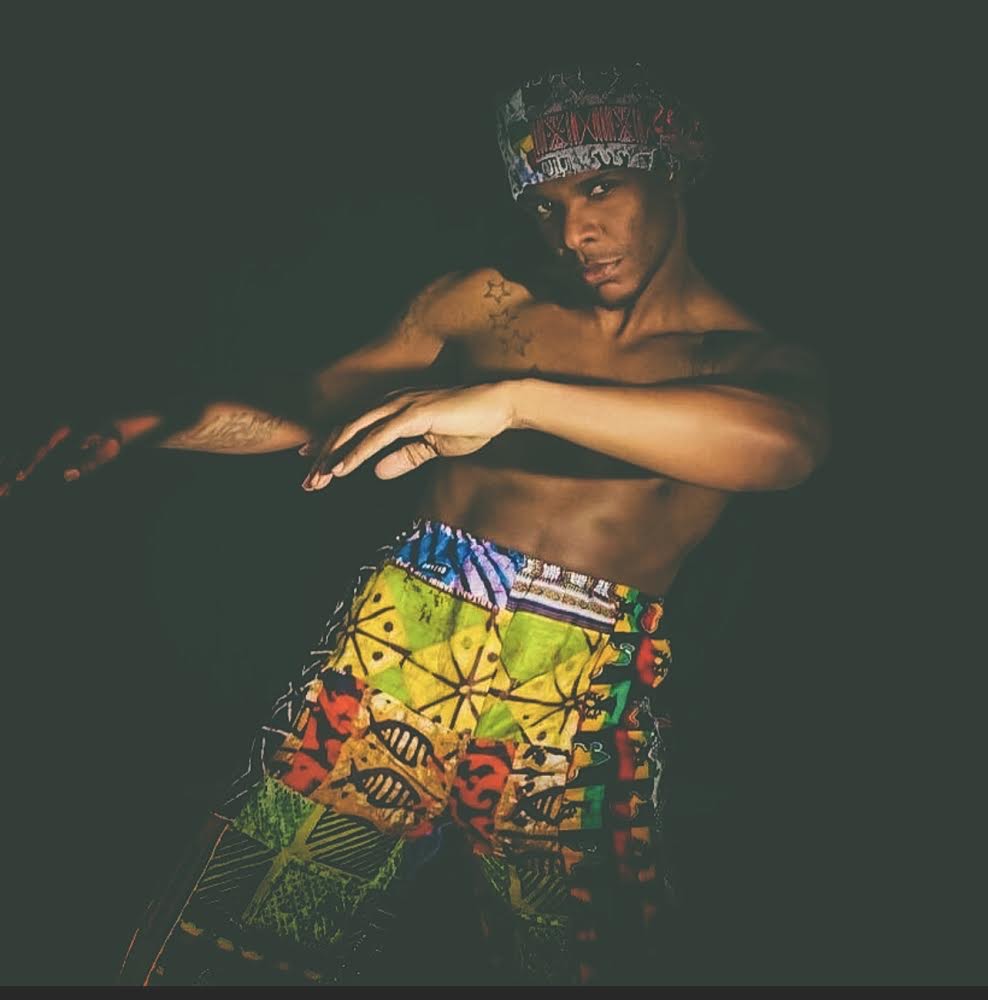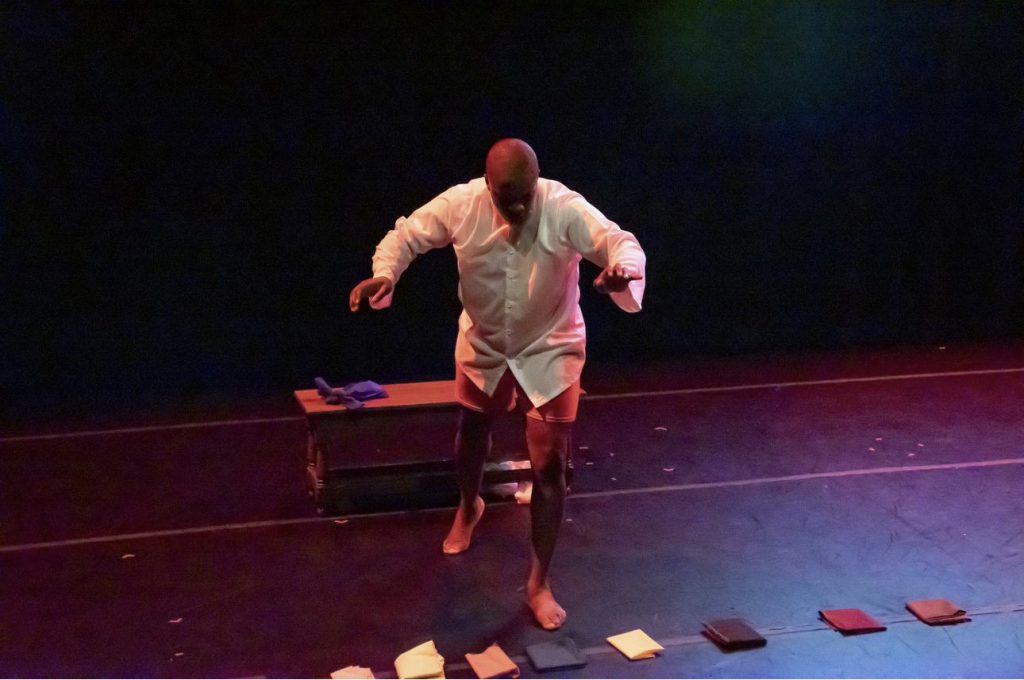Caribbean Aesthetics: Learn About Kieron Sargeant’s World of Dance – Part One
by Lou-Ann Jordan Sep 4, 2023

Rhythm and movement are fundamental attributes of Caribbean people. These qualities are evident in the cadence of our speech; they are visible in our gestures. Therefore, a spotlight on Caribbean aesthetics could not be had without mentioning the art form that embodies both—dance.
In this instalment, we veer off the path of oils, paints and canvasses and look at African Caribbean and African dance. As is our custom, we explore the art by spotlighting one of our region’s or, in this instance, our diasporic contributors. Thus, our foray into the African Caribbean and African dance focuses on Kieron Sargeant.
Kieron, a veritable sage, invites us into his world of dance. Incredibly versatile, the Trinidadian-born dancer, choreographer and educator has spent numerous years in the field and accumulated an expansive body of work. Also, with great dedication to his various roles, he has made significant contributions and received recognition for his research, performances, and choreography in both genres.
Interested in learning more about Kieron and his aesthetic, we delved into an informative two-part discussion on African Caribbean and African dance. This son of Caribbean soil helps us gain a deeper understanding of Caribbean dance and an appreciation for the distinctiveness of African dance. He also sheds light on his work in Trinidad with the established Kieron Sargeant Dance Education Foundation.
In this first part, get ready to learn about his start in the art form, his passion for research and dance education, what propelled him to become a choreographer and more.
Briefly share your journey from Trinidad to the US.
I made the transformative journey from Trinidad to the US to further my passion for dance and expand my artistic horizons. I graduated from Florida State University in 2019 with my MFA in Dance Performance and Choreography and my Master of Arts in Community Dance from Ohio University in 2022. This transition allowed me to immerse myself in diverse dance practices and engage with the rich cultural landscape of the United States. It was a significant step in my career, offering new opportunities for growth, collaboration, and artistic exploration.
Where are you currently based?
I am based in the United States, specifically as an Assistant Professor of Dance at Skidmore College, New York. This position allows me to engage with students and colleagues in a dynamic and enriching environment, fostering artistic growth and contributing to the development of emerging dancers and scholars.
You’re involved in many areas of dance. What is your professional designation?
As an interdisciplinary artist, choreographer, drummer, and dance researcher, I engage in multiple facets of the dance field. With such diverse roles, I get to explore and contribute to dance from various perspectives, integrating my expertise and passions into my artistic practice and scholarly endeavours.

Tell us about your initiation as a dancer, and at what age did you begin?
It’s difficult to pinpoint a specific age as dance has always been an integral part of my life, intertwined with my cultural heritage and identity. Still, my journey as a dancer began when I was young, immersing myself in the rich cultural practices of Traditional African Trinidadian and African Diasporic dances. This initiation into dance provided a foundation for my movement practice, igniting a lifelong passion for exploring the body’s expressive potential through dance.
In what other dance styles are you trained?
In addition to my grounding in Traditional African Trinidadian dances and African diasporic dances, I have received training in contemporary and modern dance. Such diverse training helps me draw upon various movement vocabularies and techniques, enabling me to create dynamic and compelling choreographic works that transcend stylistic boundaries.
As an academic, your research has been focused on African Caribbean and African dance. Why is dance and dance education so important to you?
Dance and dance education hold immense importance to me as they provide powerful avenues for cultural expression, storytelling, and connection. Through my academic research, I delve into African Caribbean dance’s rigorous practice and performance, exploring its interplay with visual culture, history, and critical theory.
Moreover, dance serves as a vehicle for preserving and celebrating the rich traditions of the African diaspora, promoting understanding and appreciation of diverse cultures. By engaging in dance education, I aim to pass on this cultural legacy, inspire future generations of dancers, and contribute to the evolution and vitality of dance as an art form.
What prompted you to begin choreography, or was it a natural progression for you as a dancer?
Choreography was a natural progression for me as a dancer, stemming from a deep desire to translate my artistic vision and unique voice into tangible movement experiences. As I delved deeper into my dance practice and engaged with different styles and cultural traditions, I felt a growing urge to create my own choreographic works.
Choreography allowed me to explore themes, narratives, and concepts that resonated with me personally and culturally. It expanded my creative horizons and enabled me to share my artistic voice with audiences.
What inspired you to examine the movement of the Spiritual Baptist faith and make the connection to dance as an art form?
The movement practices within the Spiritual Baptist faith have always fascinated me. I am drawn to the way in which the spirituality of the faith is deeply embodied, expressed through the arts of song, dance, and movement. This recognition of the body as the locus of both the individual and the divine resonates with me as a dancer and musician. A profound connection to African diasporic dance traditions is made through the physicality of these practices.
Also, as a choreographer and creator, I constantly seek ways to unite communities through art. The syncretic nature of the Spiritual Baptist faith, where different cultural traditions and retentions come together to create something meaningful and cohesive, serves as an inspiration. It reminds me of the power of finding common ground amidst seemingly contrasting worldviews.
By examining the movement practices of the Spiritual Baptist faith and making connections to dance as an art form, I aim to bridge the gap between spirituality and artistic expression. I believe that dance can transform and connect us to something greater than ourselves. By exploring the dance elements within the Spiritual Baptist faith, I hope to shed light on the artistry, symbolism, and cultural significance of these movements. I want to honour and celebrate the transformative power of movement within a cultural and religious context while also highlighting the shared human experience that dance can provide.

How does your academic research inform your dancing and choreography?
My academic research is a strong foundation for my dancing and choreography, providing a deeper understanding of the historical, cultural, and sociopolitical contexts in which these dance forms originated. I gain insights into the complex interplay between movement, culture, identity, and power dynamics through rigorous research. This knowledge enhances my choreographic process by informing my movement choices, conceptual frameworks, and thematic explorations. It also allows me to engage with the dances in a more nuanced and informed way, creating work that is both artistically compelling and intellectually grounded. Academic research also informs my teaching practice. It enables me to share historical and cultural contexts with my students, fostering a deeper appreciation and understanding of the dance forms we explore together.
For many, Caribbean dance is synonymous with “wining”. What are the elements or techniques that distinguish African Caribbean dance?
While “wining” is a prominent aspect of Caribbean dance, it is important to recognise that African Caribbean dance encompasses many styles and techniques that extend far beyond this particular movement. African Caribbean dance is deeply rooted in the cultural traditions and histories of the African diaspora, serving as a powerful expression of identity, resilience, and cultural synthesis. It draws from the diverse influences of African retentive and continued dances, as well as local Caribbean traditions, resulting in a dynamic and captivating dance form.
African Caribbean dance is characterised by its unique movement qualities and stylistic elements. Groundedness is fundamental, with dancers often rooted in the earth, connecting to the rhythms and energies of their ancestral heritage. Rhythmic intricacy is another hallmark, with dancers skillfully navigating complex polyrhythms, syncopated beats, and intricate footwork patterns. The expressive use of the hips and pelvis is a defining feature, conveying a sense of strength, sensuality, and vitality. Dynamic body isolations, such as undulations and isolations of the torso, arms, and head, add depth and texture to the movement vocabulary.
What is one achievement you’ve anticipated you can finally check as having completed?
Founding the Kieron Sargeant Dance and Dance Education Foundation has been a long-standing aspiration, and I am proud to have brought it to fruition. It represents a culmination of my commitment to fostering artistic growth, nurturing talent, and contributing to the cultural landscape of Trinidad and Tobago. Through this medium, I can create sustainable opportunities for dancers and empower the next generation of artists, leaving a lasting impact on the dance community and the broader arts industry.
***
There’s much more to learn about Kieron and his passion for dance. Stay tuned for part two of this interview.








